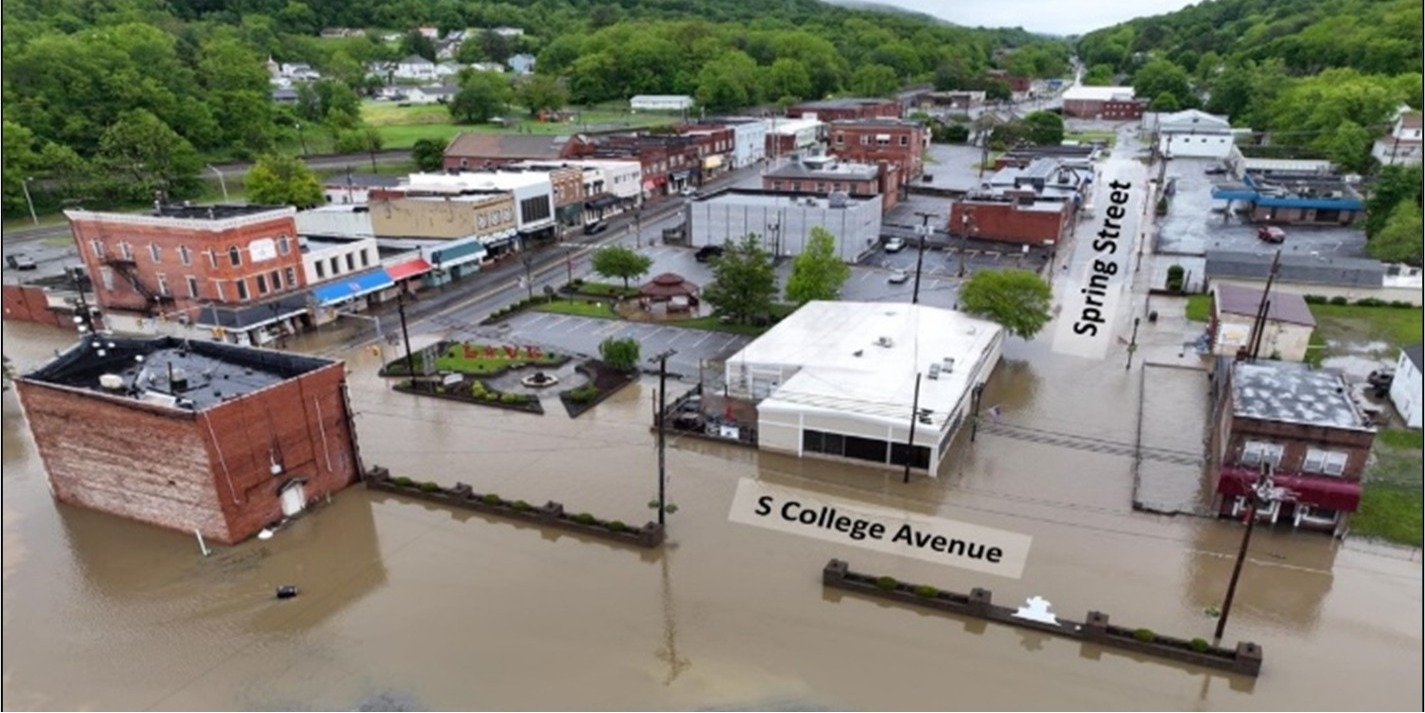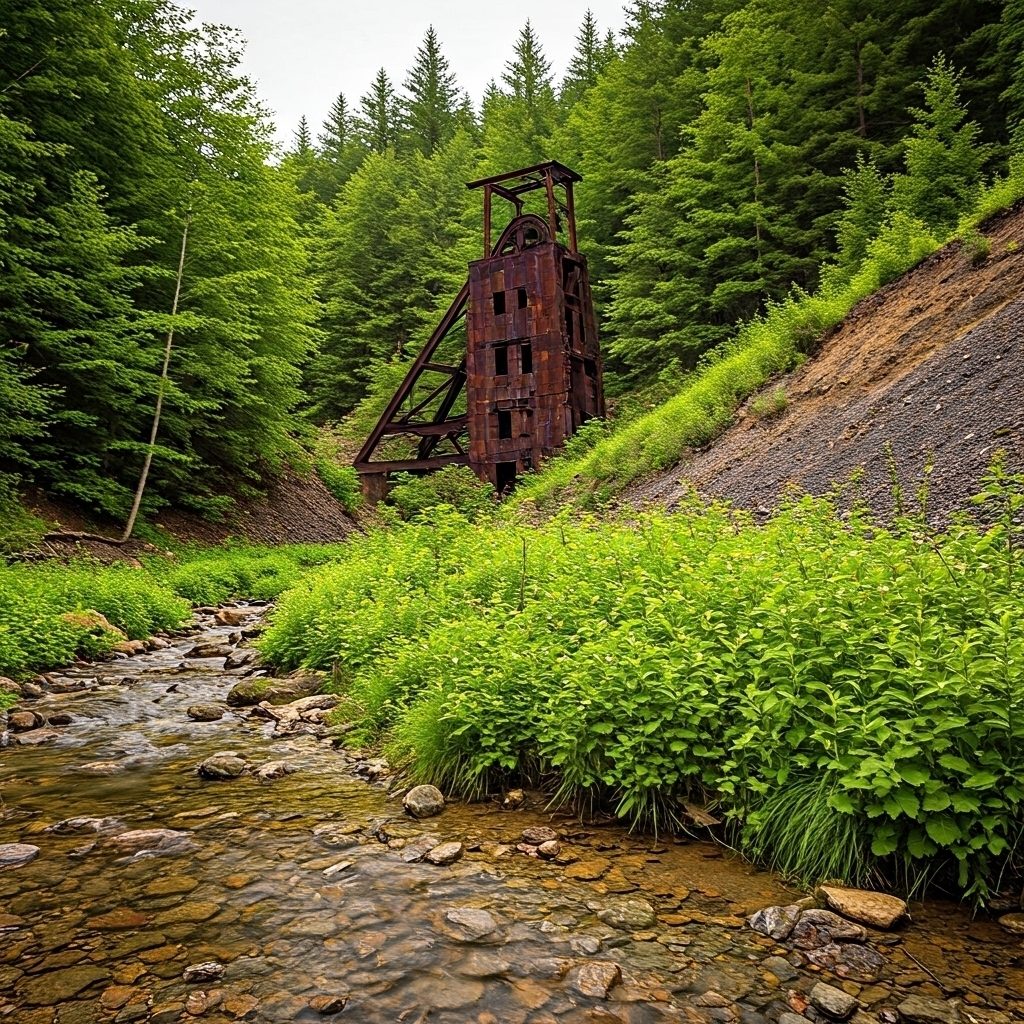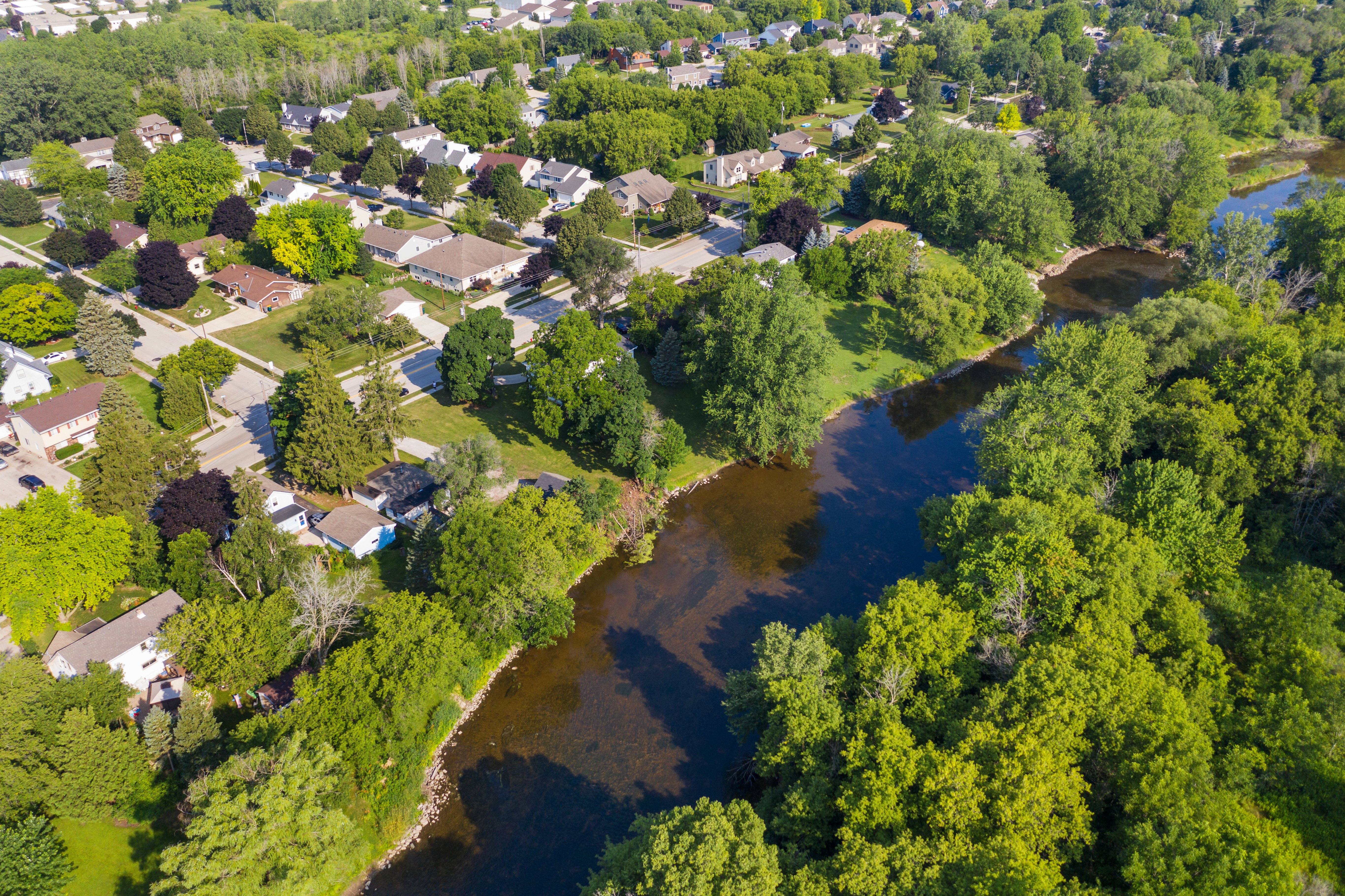Behind the article: Investing in Milwaukee’s flood resilience
In her recent piece for The Epicenter, Erin Delawalla, Director of Water Solutions, explores how the Milwaukee Metropolitan Sewerage District (MMSD) is redefining flood prevention and climate adaptation. The article charts MMSD’s evolution from compliance-focused management to a visionary resilience strategy, spotlighting watershed-scale planning, innovative public-private partnerships, and a commitment to community collaboration.
Vision that reaches all the way to 2035.
The timing of her article was especially poignant. In early August 2025, Milwaukee County faced record-breaking floods. Thanks to MMSD’s decades of foresight and investments, the impacts, while significant, could have been far worse.
To get a glimpse into what inspired the article and why Milwaukee’s approach stands out, we sat down with Erin for a short behind-the-scenes Q&A.
Q&A with Erin Delawalla
1. What inspired you to tell the story of MMSD’s resilience strategy, and what made it stand out to you?
Communities experiencing flooding are, unfortunately, no longer the exception. It seems there is another city or town in the news every day with record-breaking rain and extreme flooding. The data shows that this pattern will not improve in the short term; it will likely get much worse. However, many communities are taking charge of the situation, forging and funding their own path to resilience. MMSD stands out to me because they are proactively investing in green infrastructure and floodplain restoration at scale. They are not only seeking grants but also finding low-interest debt and long-term financing so they can make the infrastructure investments they need today to ensure the long-term vitality of their community.
2. You describe MMSD’s approach as “thinking like a watershed.” Can you explain what that means and why it's so powerful?
What I love about MMSD’s strategy is that it is “both and”. Is it better to make your community flood-resilient by building green infrastructure in the urban core or catching the water upstream where it falls and slowing it down? Honestly, we often need both. But it is hard to prioritize two things simultaneously and do both at scale in parallel. Increasingly, however, that is what is needed, and it takes a long time. MMSD has been working on this issue for 25 years, and they have only installed 157M gallons worth of green infrastructure out of a goal of 740M gallons in the urban core. It’s much more obvious to build the infrastructure within your municipal or regional boundary, not to mention much easier to secure political buy-in. However, by going upstream into rural watersheds, MMSD is getting vastly more storage per dollar than its urban projects. To date, MMSD has created 1.3 billion gallons of capacity by acquiring 5,000 acres of flood-prone land in the upstream watersheds. If you wait until your urban core strategy is “finished”, you will miss out on a huge opportunity to manage half the problem.
3. MMSD has taken some bold steps that go beyond what's required by regulation. What do you think has made that kind of long-term vision possible?
I think having a strong visionary leader like Kevin Shafer has been key. Much of the foundation for MMSD’s work had been laid before Kevin started in 2002, but he doubled down and ensured that the vision was scaled up, and he took a very long-view to success. He mentioned 5+ years before landowners, communities, and MMSD commissioners fully bought into the strategy. It would have been much easier for him to quit or give up on pushing the hard strategy during those years when they didn’t see the fruits of their labor. But he knew that these were fundamentally the right steps and that momentum would start to carry them forward at some point.
The regional governance structure was the second reason that enabled MMSD’s long-term vision. MMSD was created by state legislation with a mandate to manage flooding and assess property taxes. Accordingly, MMSD has used this structure to generate funds to accomplish its mandate and to leverage those funds through long-term, low-cost debt to invest more today and pay those costs back over time. So many individual municipalities would benefit from being part of a similar regional flood district structure to enable management of flooding at the large watershed scale.
4. Public-private partnerships play a significant role in MMSD’s model. What makes that approach effective for delivering green infrastructure?
Public-private partnerships (also known as P3s) are intended to shift public sector risk to the private sector, which stands to earn a return on investment if it can do its job effectively. The public sector gets the outcome they need for the agreed-upon budget, without risk of overruns. This is a potent tool for the public sector to ensure the necessary infrastructure gets built and built well, on budget and on time. While very common in the transportation construction industry (like airports or tollways), P3s are less well understood or trusted in the nature-based solutions space.
There is a fair amount of risk in setting up new green infrastructure in urban areas that have been repeatedly redeveloped for over 100 years. All kinds of utilities and outdated infrastructure exist underneath parking lots and roads. In addition, the inherent nature of this “distributed” infrastructure is that you need a little bit in many places. It would be ideal to have a rain garden catching runoff from most paved parking lots. Who talks to all of those landowners and educates them about green infrastructure? How do you navigate each individual property owner’s preferences and concerns while still meeting the objectives of the project and MMSD? You can imagine that many conversations start, resources are invested, and the project ultimately dies on the vine. There is a cost to all those landowner engagements, and the risk of designing projects that ultimately run into a fatal flaw during advanced design or construction. P3s shift those upfront costs to the private sector, incentivizing those who can develop green infrastructure efficiently to build more of it. P3s are also known for accelerating the pace of green infrastructure, as there are not multiple rounds of bidding to process, and the private sector project sponsor is incentivized to complete the project so that they can be reimbursed. No completion, no reimbursement. The public sector client only pays when the contracted outcome has been delivered successfully.
5. Where do you think they should start if another city or regional utility wants to follow MMSD’s lead?
In an ideal world, I would start with three things:
- A regional governance structure
- An established property tax or stormwater utility fee
- A watershed resiliency plan
You can chart a path toward flood resiliency with less than that, but I believe all three are key for long-term scale. The watershed plan is the low-hanging fruit, so if nothing else is currently in place, that is the best starting place. It can bring multiple communities together to understand their watershed and how to build resilience going forward.
Why it Matters
With rising temperatures, more intense rain events, and growing urban populations, the need for scalable, cost-effective resilience strategies is more urgent than ever. Milwaukee’s example offers valuable lessons for other cities, utilities, and partners nationwide.
Read Erin’s full article on The Epicenter:
Milwaukee Metropolitan Sewerage District is Investing in Resiliency
- Videos (45)
- Environmental Mitigation (44)
- Natural Resource Restoration (33)
- Landscape-scale Restoration (30)
- Species & Habitats (28)
- Water Quality (17)
- articles (17)
- California (16)
- Resiliency (15)
- Texas (15)
- Virginia (13)
- Pennsylvania (12)
- Regulatory (11)
- Technology & Innovation (11)
- Oregon (10)
- Klamath (9)
- Case Studies (8)
- Procurement (8)
- Research (8)
- Water Quantity (8)
- Studies & Reports (7)
- Case Study (6)
- Louisiana (6)
- Presentations (5)
- Storymap (5)
- Florida (4)
- Maryland (3)
- Urban Renewal (3)
- Video (3)
- Flooding (2)
- Illinois (2)
- Milwaukee (2)
- North Carolina (2)
- Restoration (2)
- South Carolina (2)
- Tennessee (2)
- Webinar (2)
- Wisconsin (2)
- Article (1)
- Bois Darc (1)
- Carpentersville Dam (1)
- Corporate Sustainability (1)
- Dam Removal (1)
- Economic Development (1)
- Environmental Restoration (1)
- Erin Delawalla (1)
- Justin Freedman (1)
- Mine Reclamation (1)
- Ohio (1)
- Podcast (1)
- Podcasts Audio (1)
- Suburban Chicago (1)
- Trees Planting (1)
- West Virginia (1)
- indiana (1)




